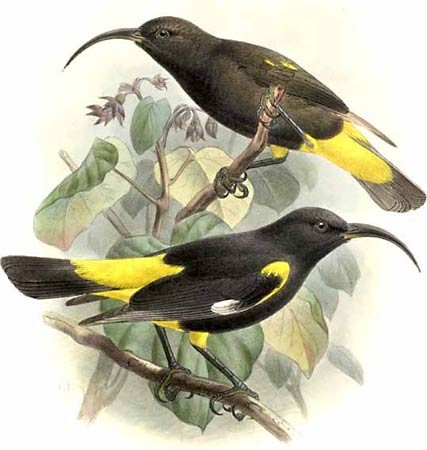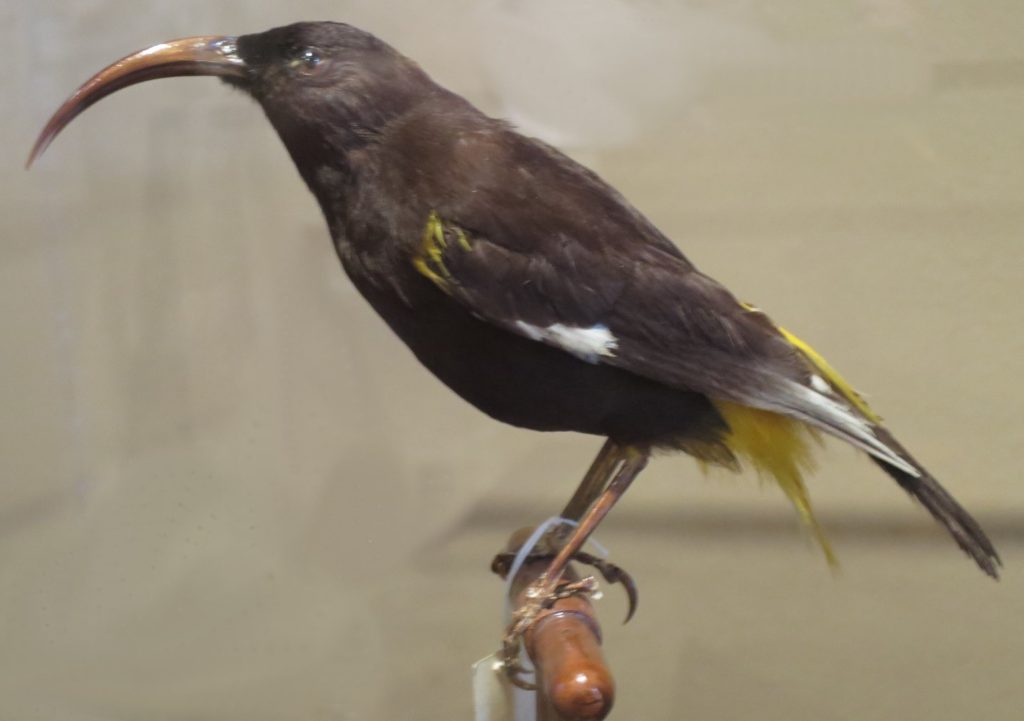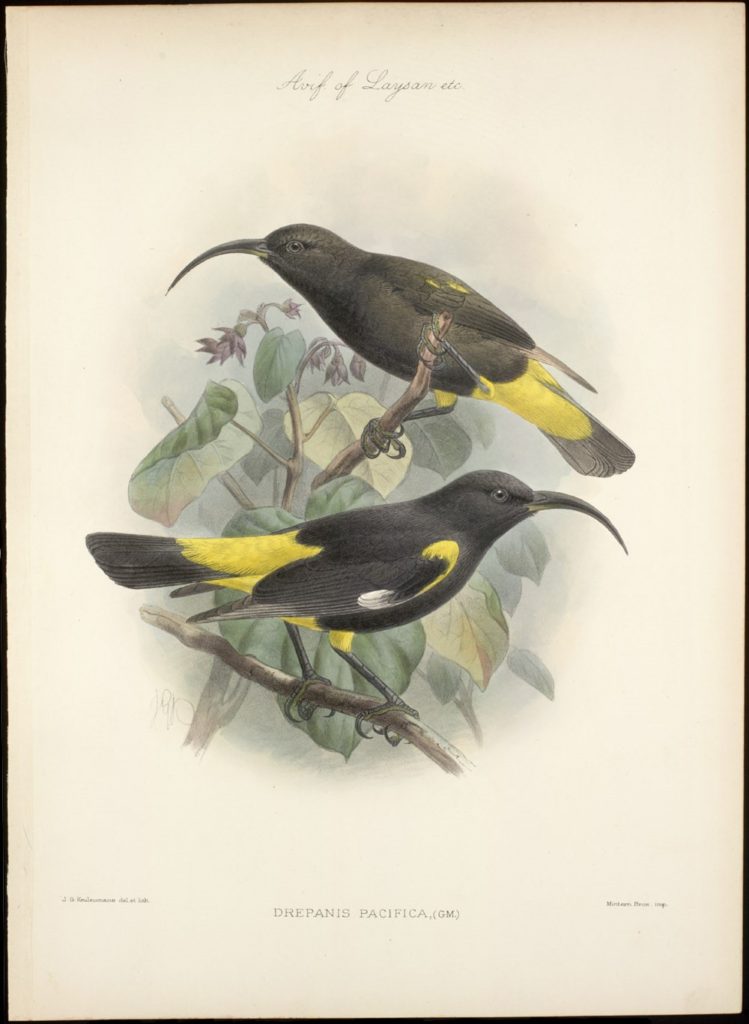Birdfinding.info ⇒ The last documented observation of Hawaii Mamo occurred near Ka’umana in July 1898. The species had been uncommon in lowland and foothill forests of the Big Island throughout most of the 1800s. Only a few specimens were collected in part because it was rarely encountered and in part because it had a limited kind of immunity from persecution—in that its feathers were reserved for adornments of royalty such as the “million dollar cloak” of King Kamehameha I (held by the Bernice Pauahi Bishop Museum) which includes an estimated 450,000 feathers from an estimated 80,000 Hawaii Mamos.
Hawaii Mamo †
Drepanis pacifica
Extinct. Formerly endemic to the Big Island of Hawaii.
Identification
A very large black honeycreeper with a long, decurved bill, yellow shoulders, rump, and vent, and a white spot or stripe at the base of the primaries.
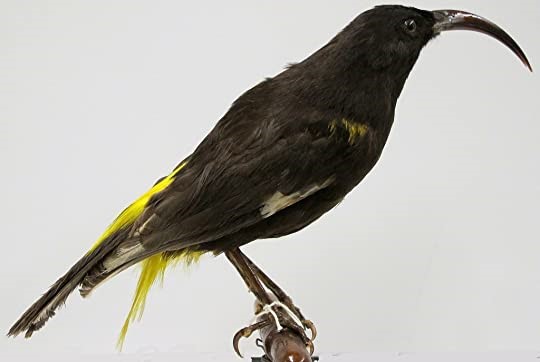
Hawaii Mamo. © Bernice Pauahi Bishop Museum

Hawaii Mamo, dorsal view showing yellow rump. © Bernice Pauahi Bishop Museum
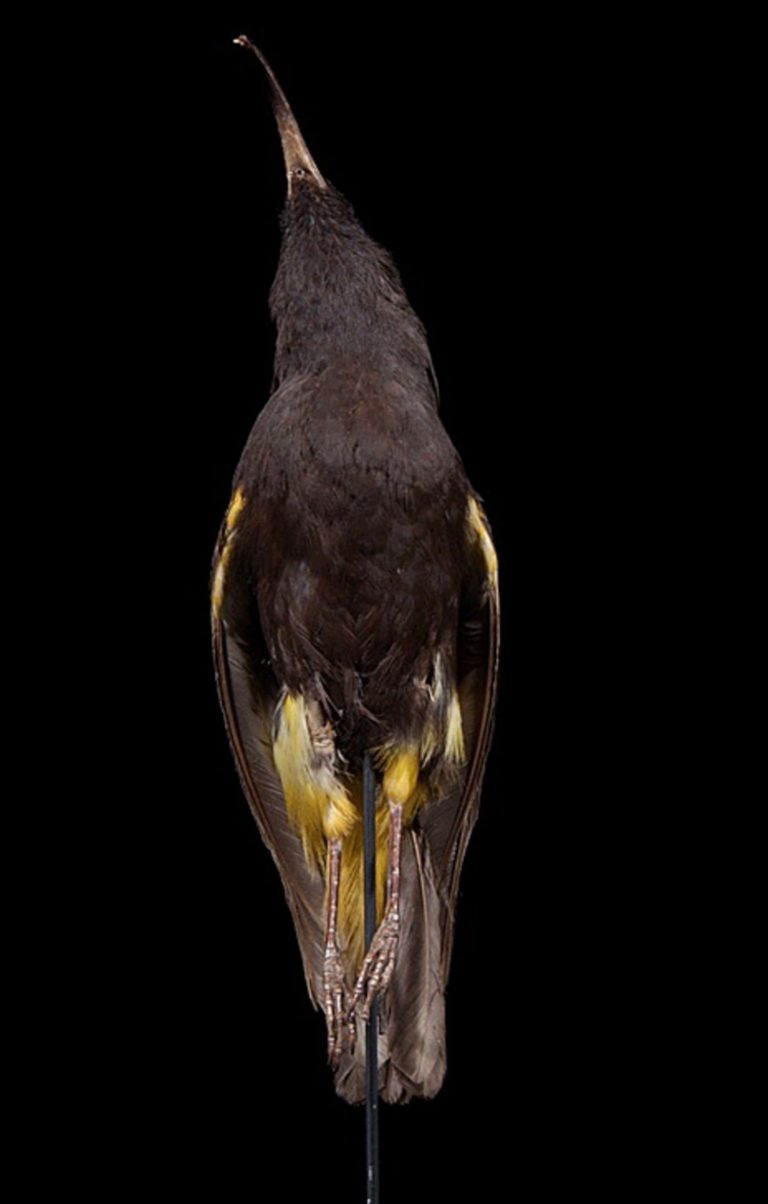
Hawaii Mamo, ventral view. (Specimen ID: RMNH.AVES.110013; Big Island, Hawaii.) © Naturalis Biodiversity Center
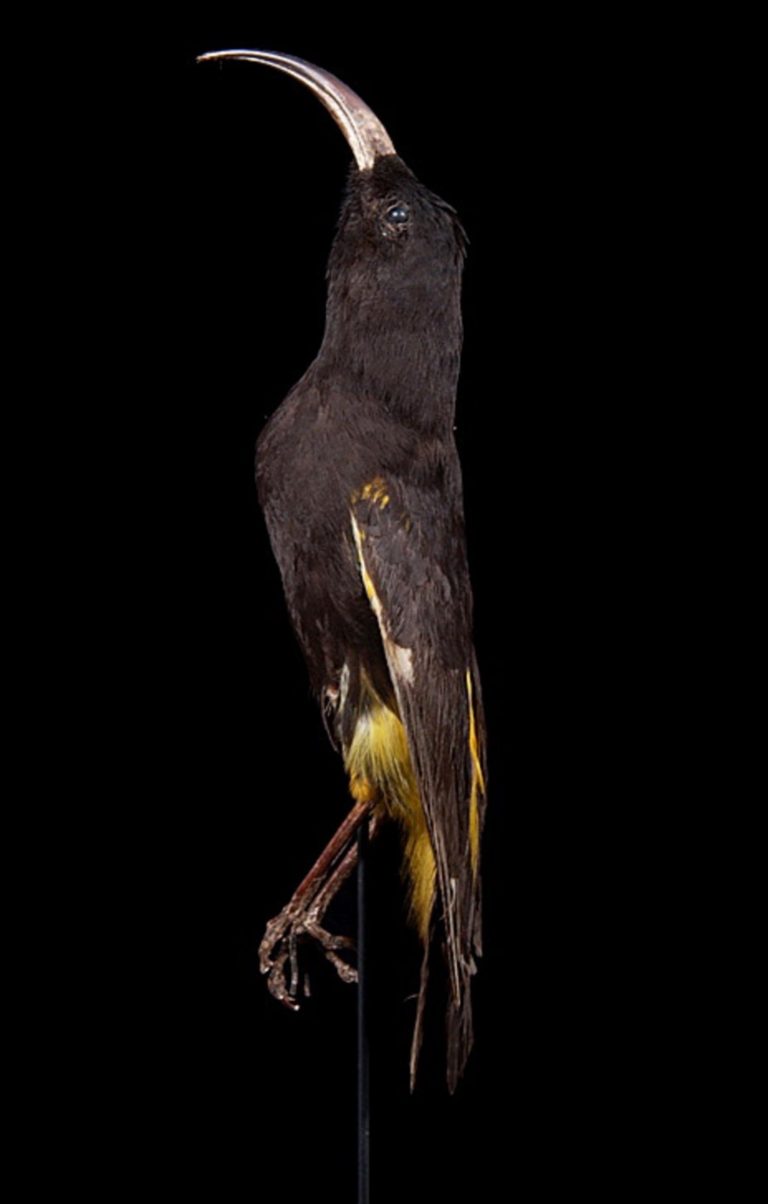
Hawaii Mamo, side view. (Specimen ID: RMNH.AVES.110030; Big Island, Hawaii.) © Naturalis Biodiversity Center
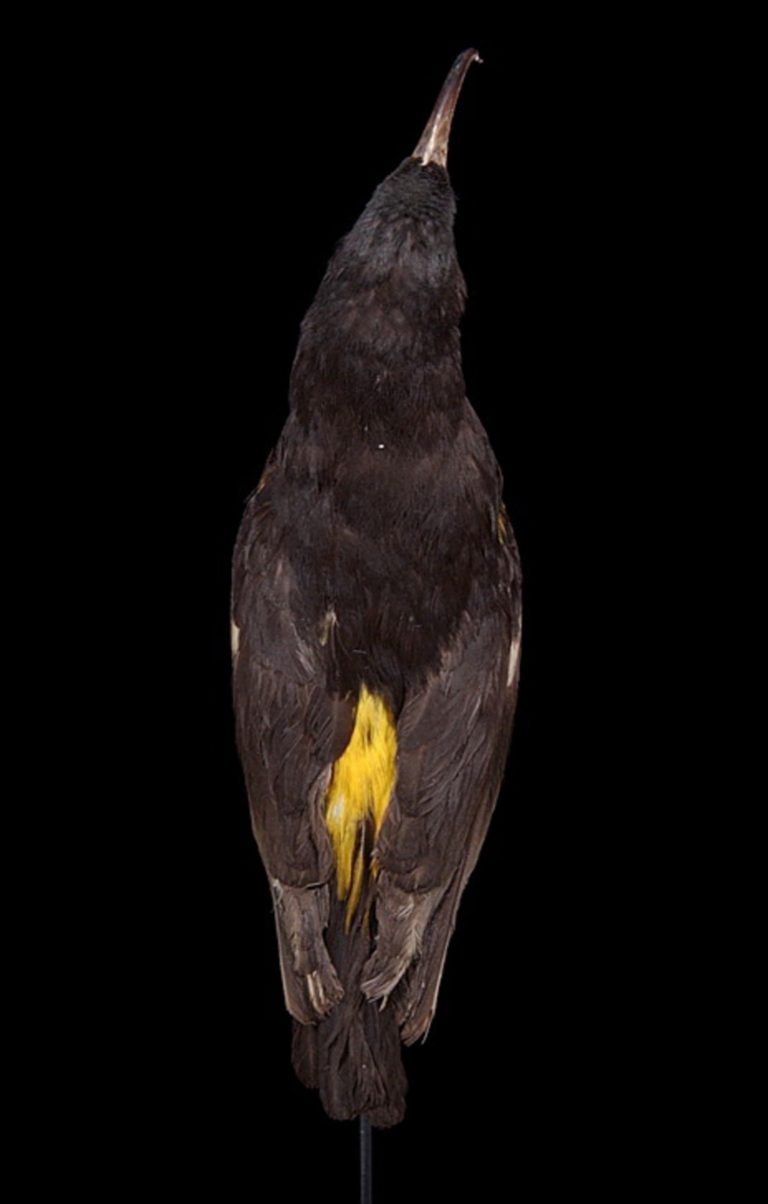
Hawaii Mamo, dorsal view. (Specimen ID: RMNH.AVES.110013; Big Island, Hawaii.) © Naturalis Biodiversity Center
Notes
Monotypic species.
IUCN Red List Status: Extinct.
References
BirdLife International. 2016. Drepanis pacifica. The IUCN Red List of Threatened Species 2016: e.T22720848A94686625. https://dx.doi.org/10.2305/IUCN.UK.2016-3.RLTS.T22720848A94686625.en. (Accessed May 25, 2020.)
Hume, J.P. 2017. Extinct Birds (Second Edition). Bloomsbury Publishing PLC, London.
Pratt, H.D. 2005. The Hawaiian Honeycreepers: Drepanidinae. Oxford University Press.
Pyle, R.L., and P. Pyle. 2017. The Birds of the Hawaiian Islands: Occurrence, History, Distribution, and Status. Version 2 (January 1, 2017). http://hbs.bishopmuseum.org/birds/rlp-monograph/. B.P. Bishop Museum, Honolulu, Hawaii.
